Wireless headphones are available like sand by the sea, added. And so we pick one of the grains of sand and see where the real added value lies. The price is quite proud, but the battery life is also it. Now all that remains is to fit the rest.
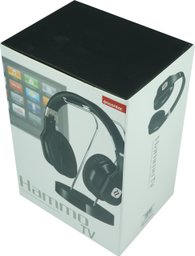 At almost 140 euros, the Noontec Hammo TV is significantly higher than many well-known competitor products such as the Sony MDR-RF895RK, which was even available for less than 80 euros at the time of the test and which is certainly not a bad device with its advertised 100 m range. The shortcoming of such solutions, as with Sony, lies in the proprietary connectivity and the lack of universal connectivity.
At almost 140 euros, the Noontec Hammo TV is significantly higher than many well-known competitor products such as the Sony MDR-RF895RK, which was even available for less than 80 euros at the time of the test and which is certainly not a bad device with its advertised 100 m range. The shortcoming of such solutions, as with Sony, lies in the proprietary connectivity and the lack of universal connectivity.
Noontec now thinks that this has solved this better with the Hammo TV and still offers the connection to smartphones and other devices with jack output, which can then also be used without the wireless base station thanks to optional lylatable cables. Our test sample is still from the first series and has to do without the optical input (SPDIF), but the rest is identical. However, we are looking in vain for a microphone.

The scope of delivery is useful, because you get a base station, a micro USB plug-in power supply with EU attachment for the charging station and the matching cable, a jack-cinch cable, as well as a 3.5mm jack cable for the wiring between the base station and the TV (or TV. PC) and a second as a wired version for mobile devices. In addition, of course, there are the foldable headphones as such and a small carrying bag.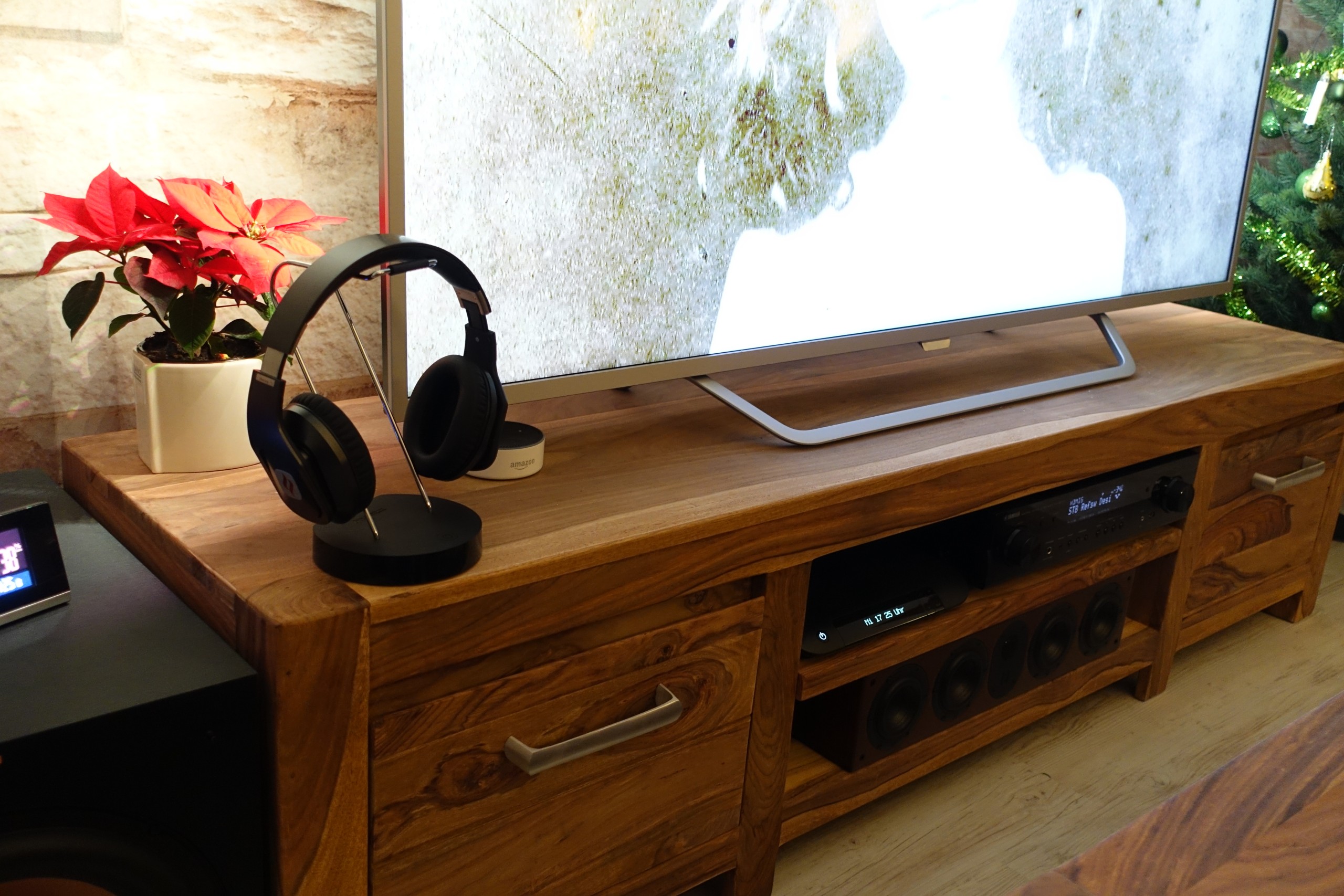
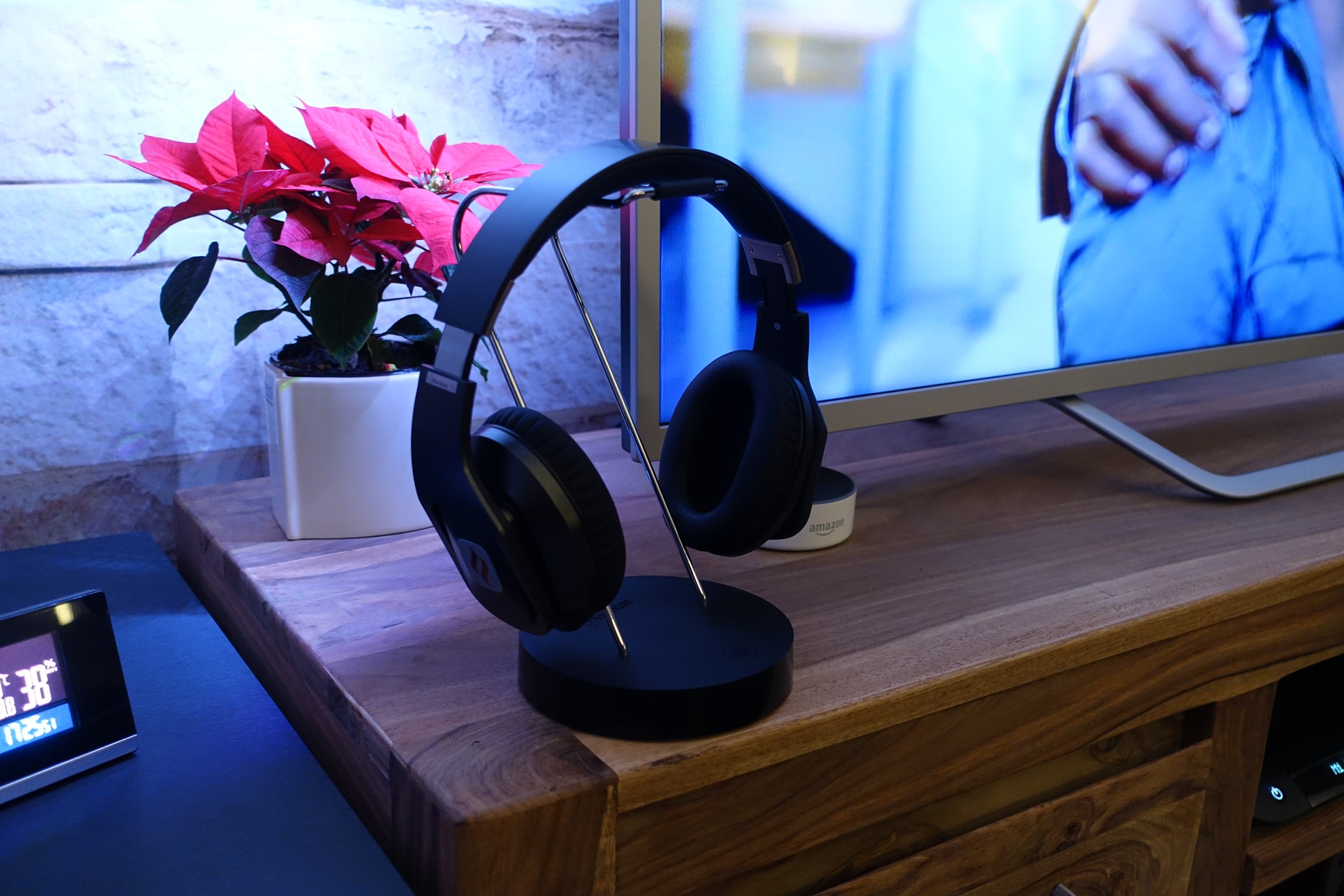 |
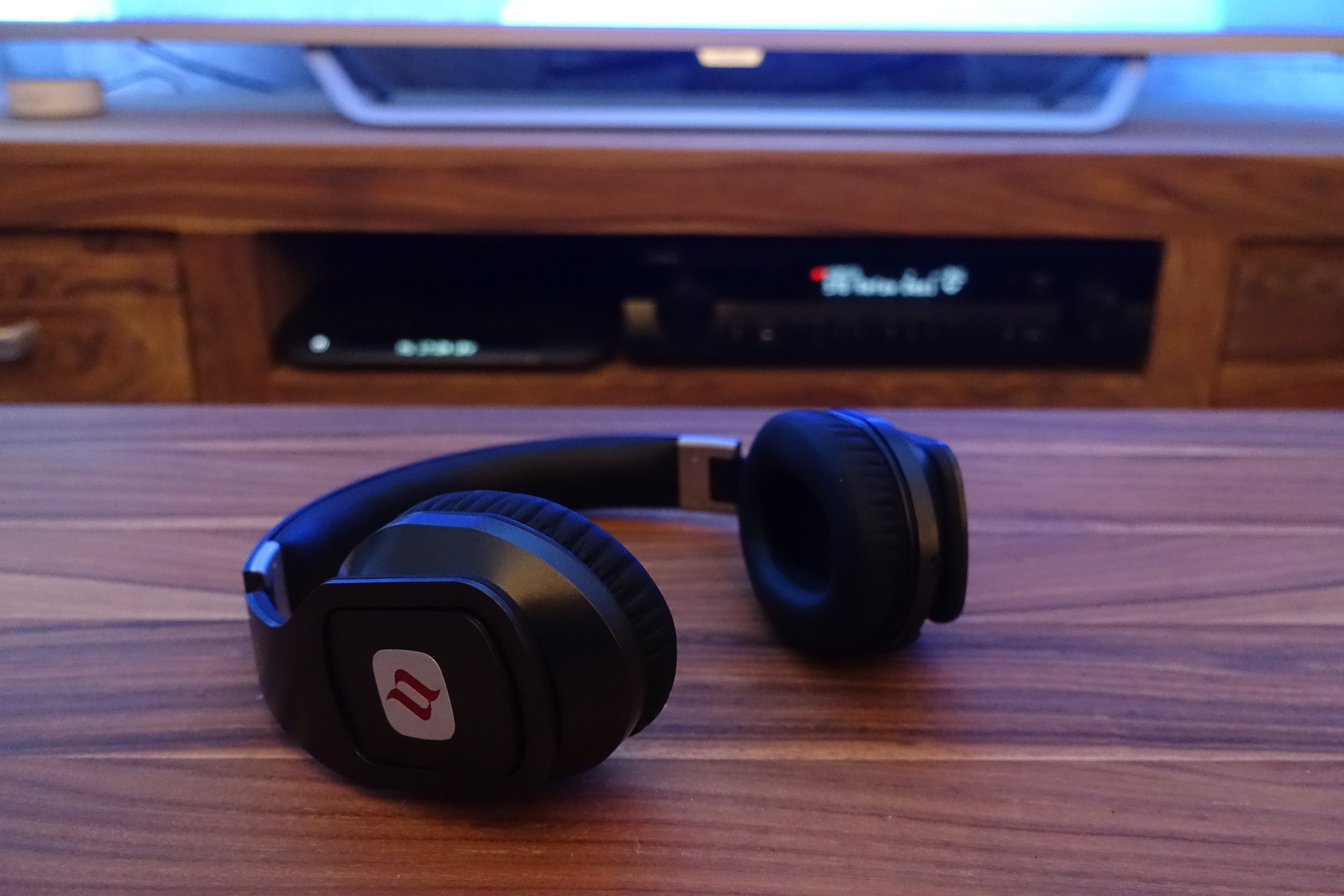 |
Optics and haptics
The material mix of headphones made of predominantly plastic and aluminium applications, which is kept in matte anthracite, is visually and tactilely quite fine. The competitors often offer even less. The base station made of matted plastic at the top and shiny on the surrounding surface also fits, but looks much simpler, if not too cheap.
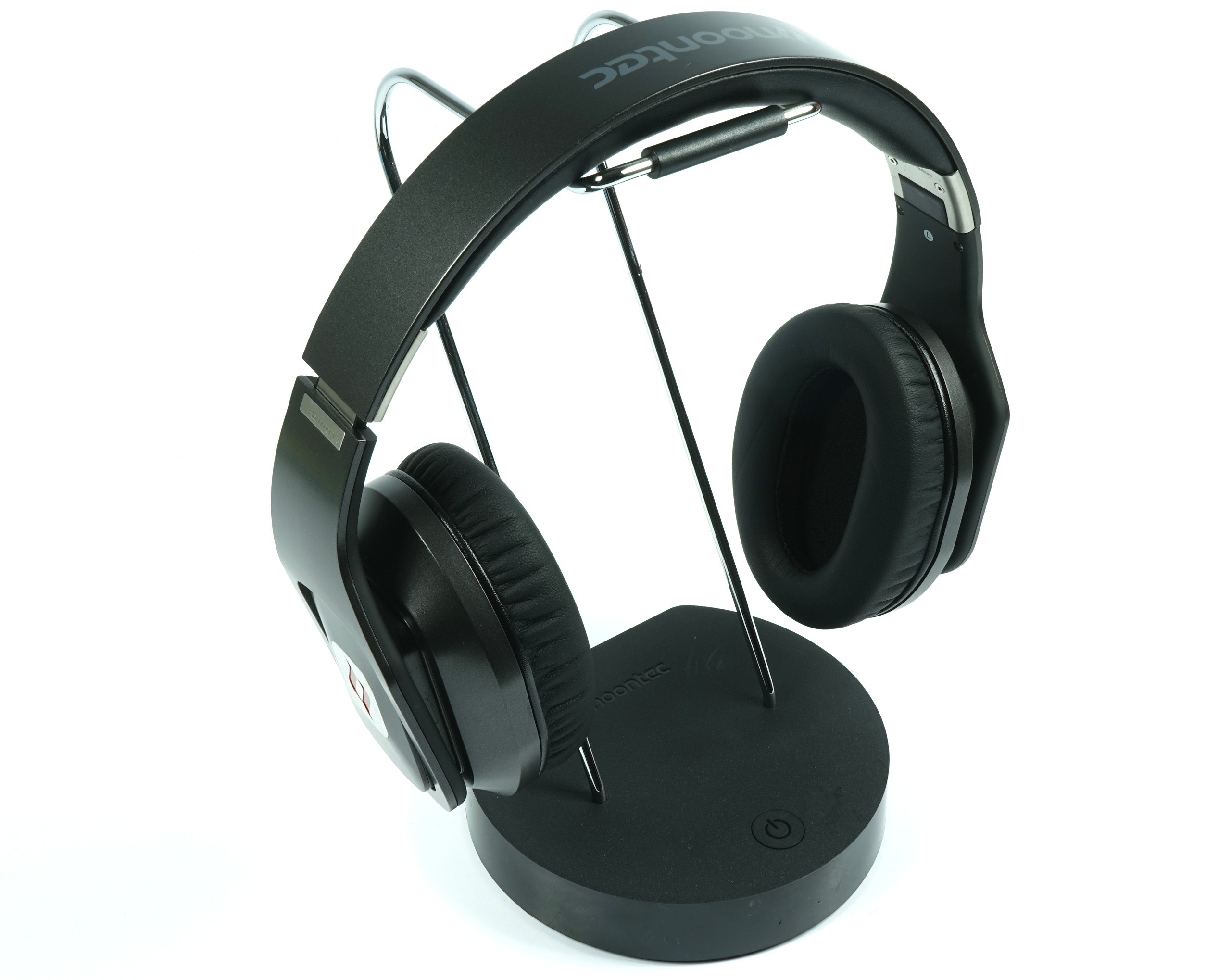 |
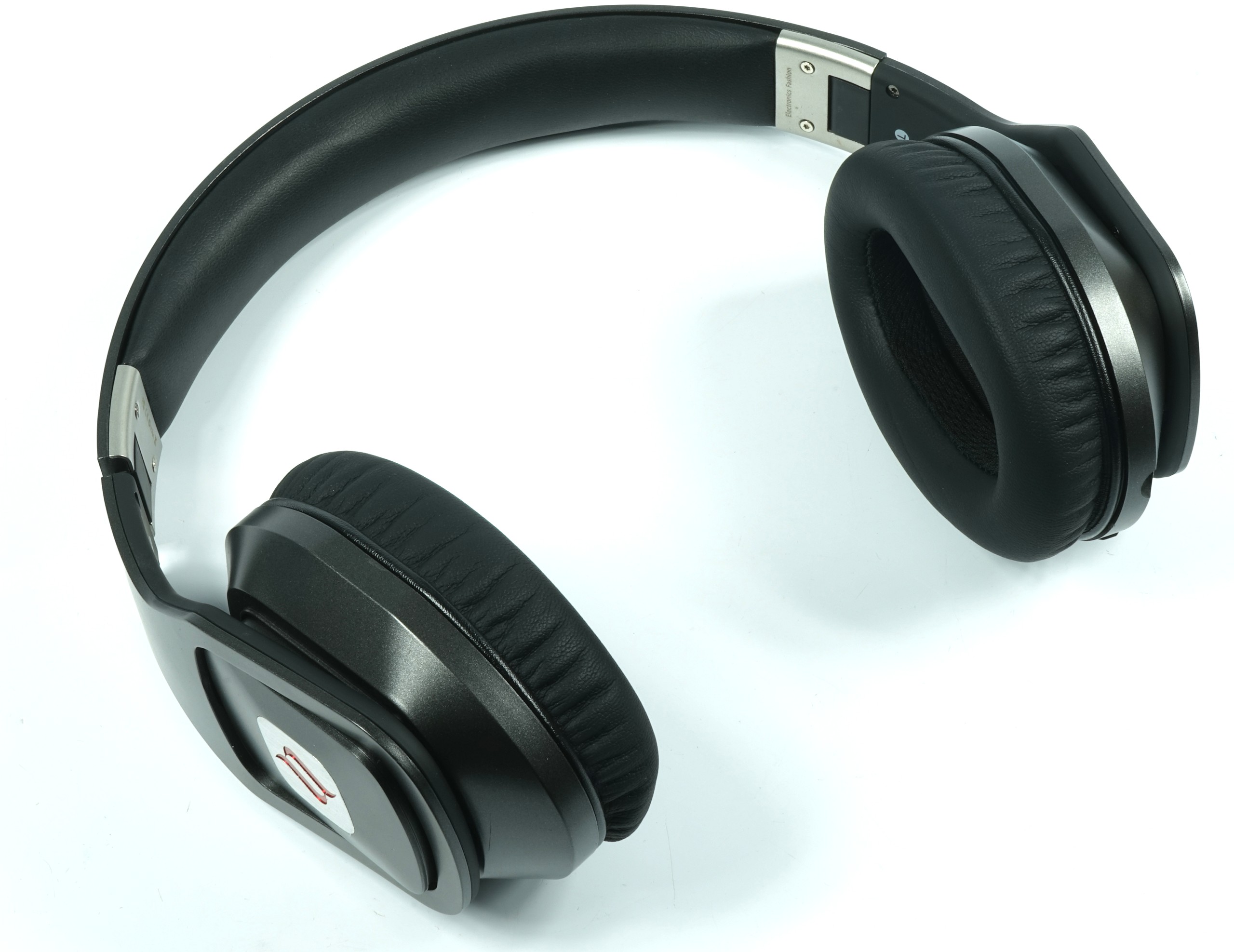 |
The overall picture of the headphones weighing only 256 grams without connected cables is fine, but is also not conspicuous or visually intrusive. Rather bland. The chrome-plated handle of the suspension fits perfectly visually and is also stable enough not to tip or fall down.
Comfort
The headphones can be moved around both axes, which together with the band of the handle, which can be pulled out by up to 4 cm, allows a really perfect adaptation to the head shape and is not taken for granted in this form. The contact pressure is still subtle enough even with large heads, so that even eyewear wearers do not miss an incisive wearing experience of the worse kind.
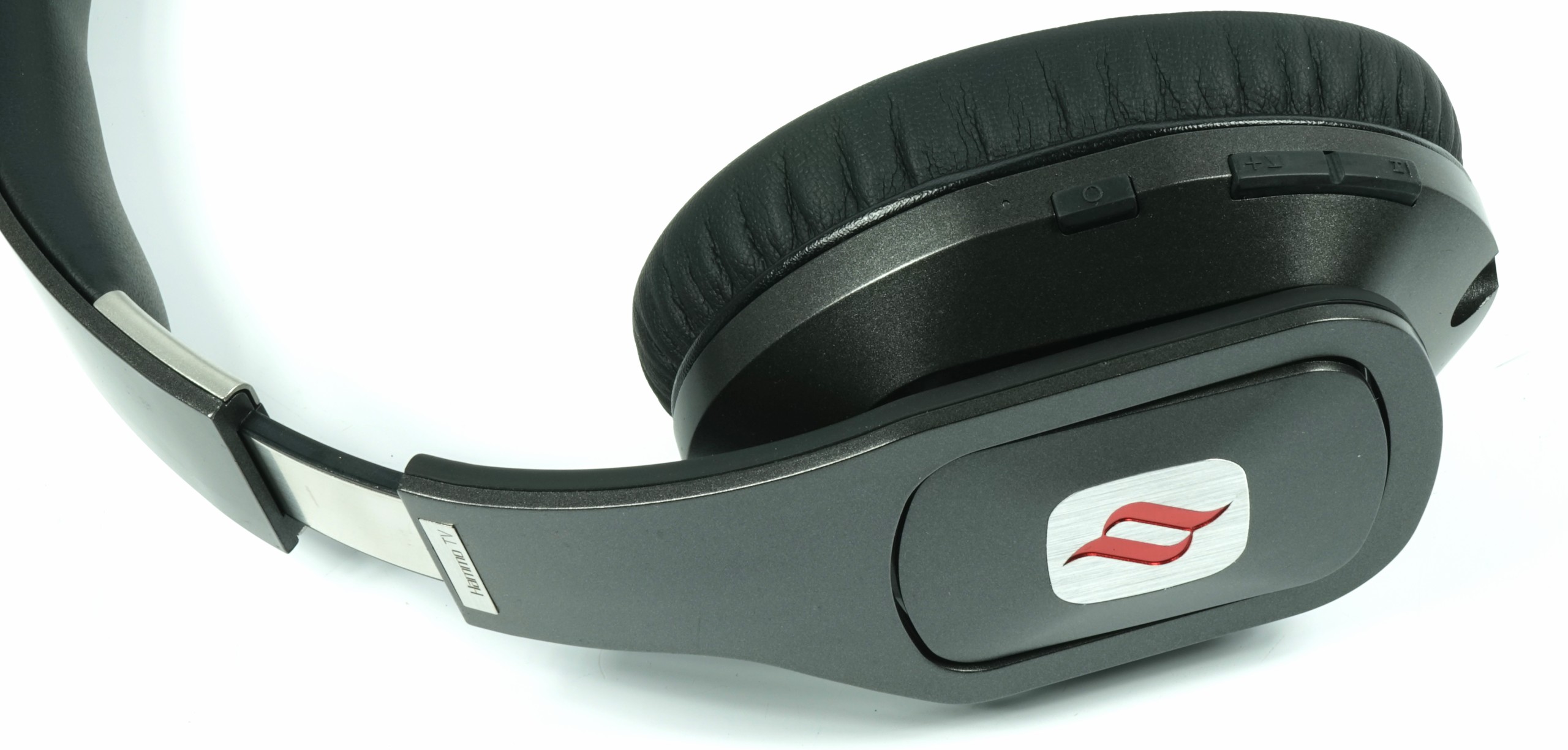
The very soft and even with larger eavesdroppers still quite well final ear pads made of a material mix with PU-leather imitation and textile covering fit. Thus, the ventilation works quite passably and the microclimate moves towards moderate latitudes. Then you can endure a good three hours of film in a piece, before you have to go to the toilet anyway.
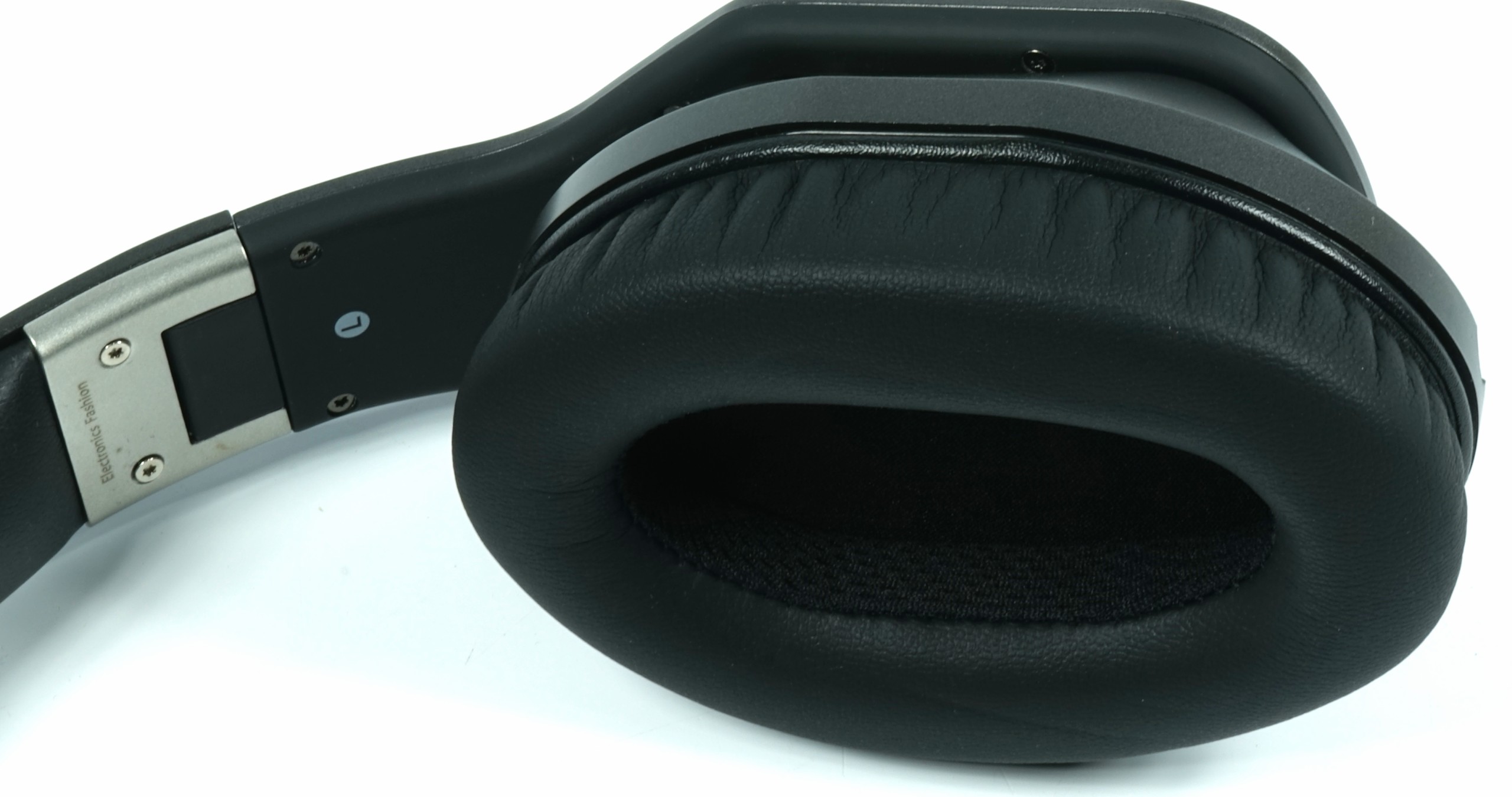
Operation and connectivity
For the connection between base station and headset, you rely on Bluetooth 4.x with aptX, connected with a maximum theoretical range of approx. 10 meters. The three rubberized multifunction buttons on the left side are used for pairing or Power on/off, volume, and some player features for connected mobile devices when they are wirelessly connected. This is because you can connect the headphones to your smartphone via Bluetooth instead of using the base station. If you like it more conventionally, you can also use the supplied cable, but Noontec does not support a multifunction jack. Well, there is no microphone anyway, so that can be hurt.
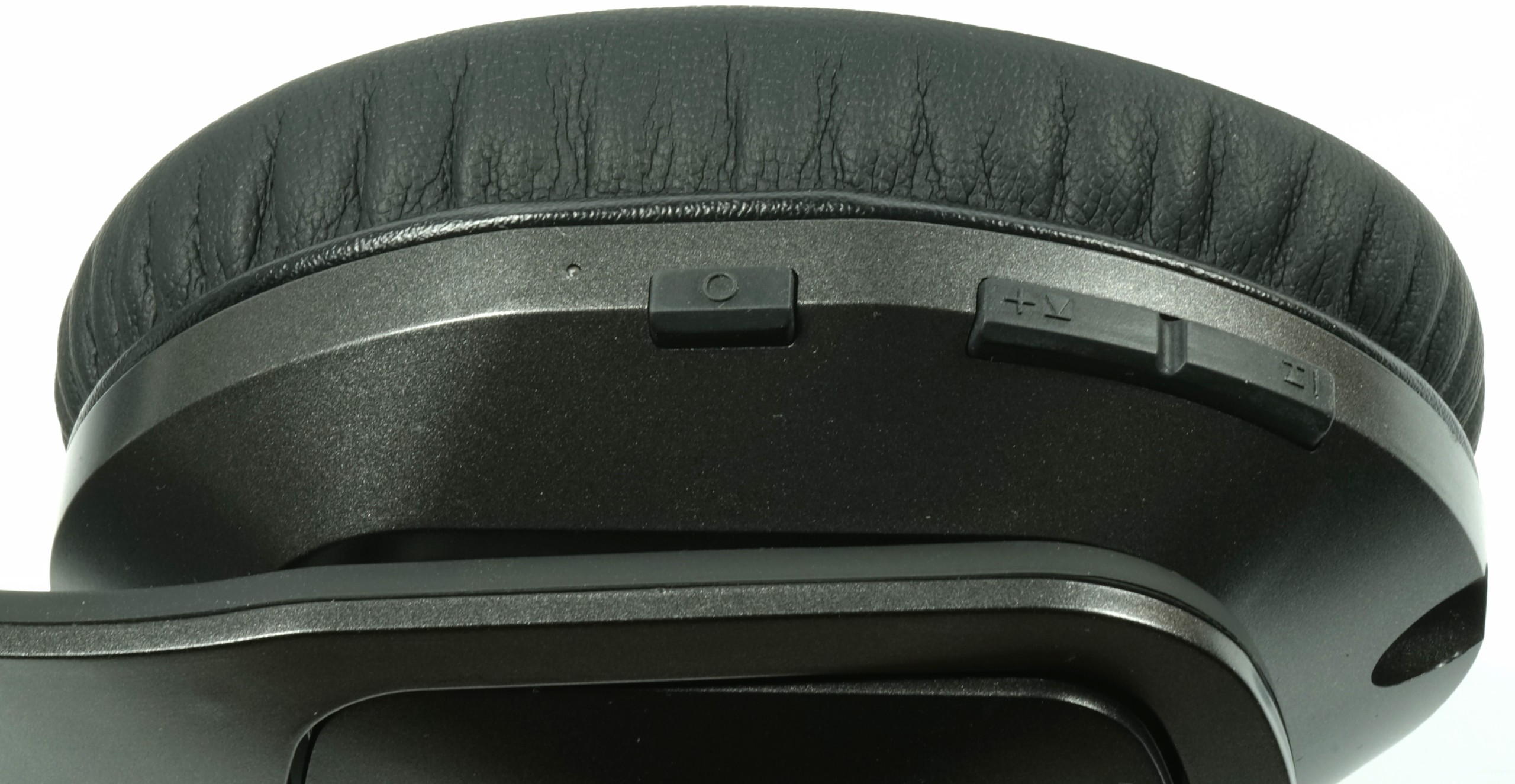
At the base station you can find the analog input for the TV (or any other device with jack or RCA output), the 5V input for the power supply and the 5V USB output for charging the headphones (or smartphones). The current versions also have an optical SPDIF input for the TV.

You don't have to write more about the headphones, so we can quickly look at the most important technical data before the measurements and the battery test:































Kommentieren